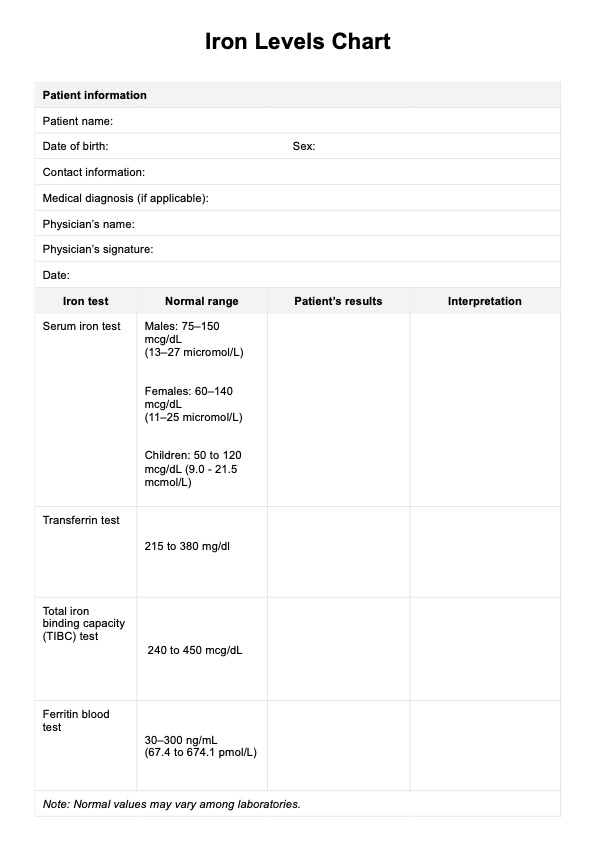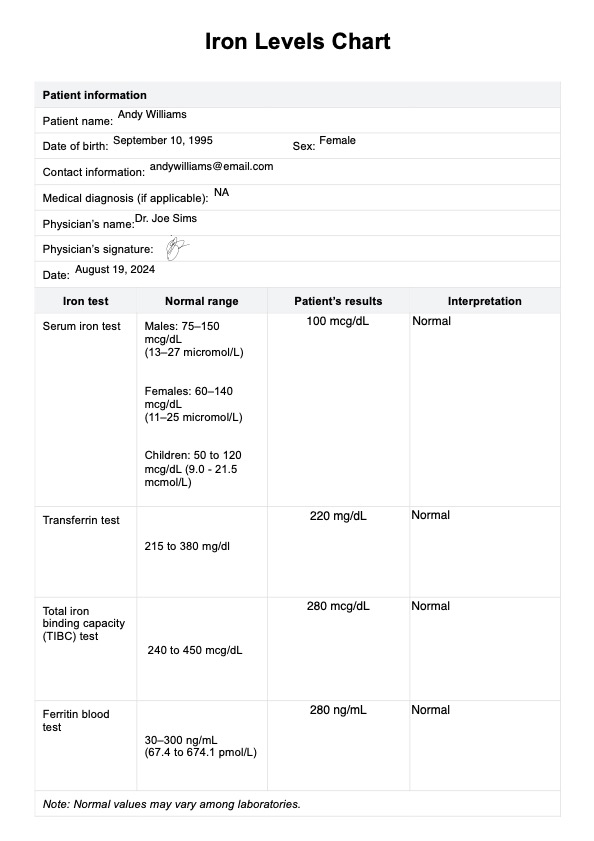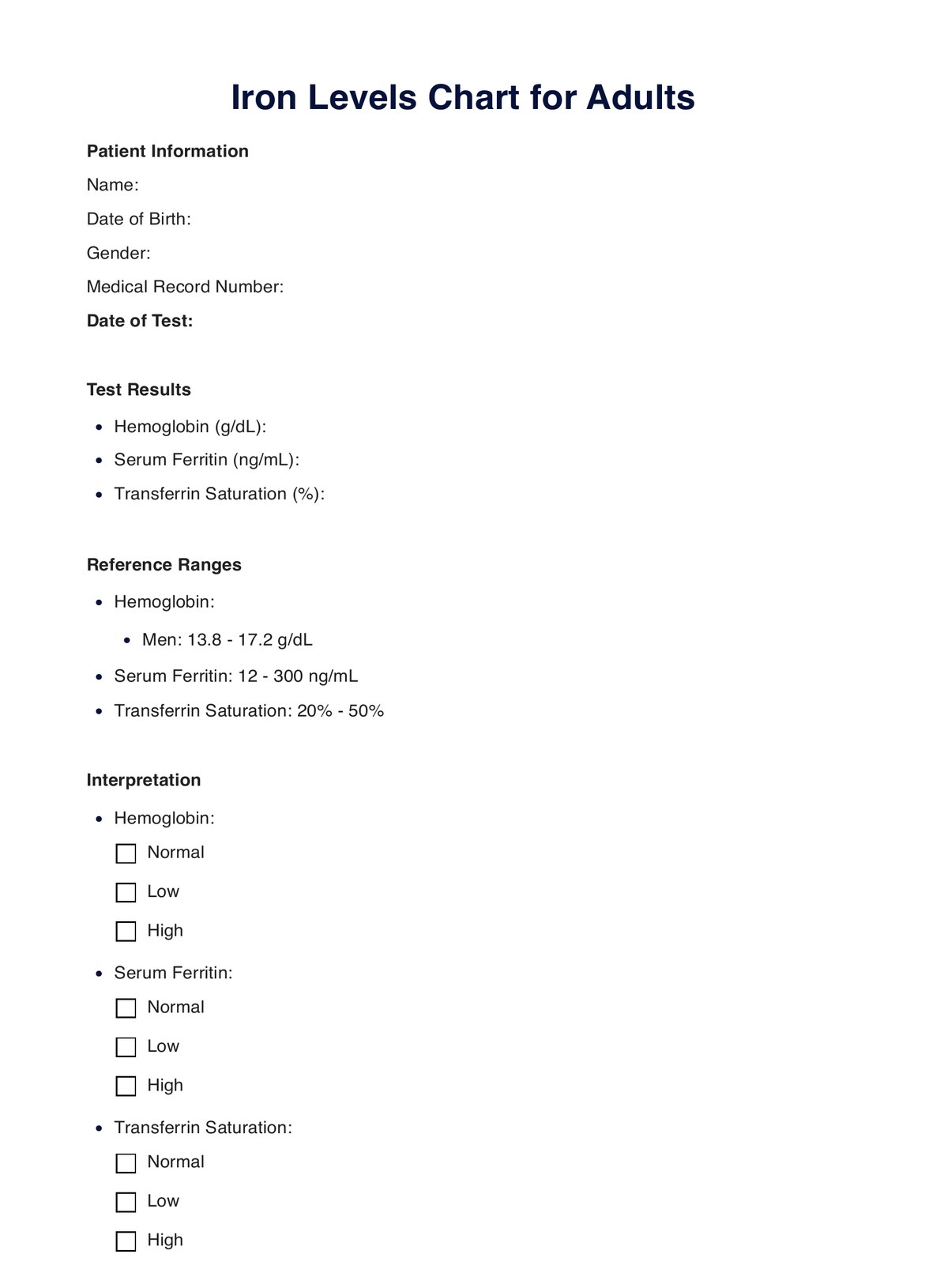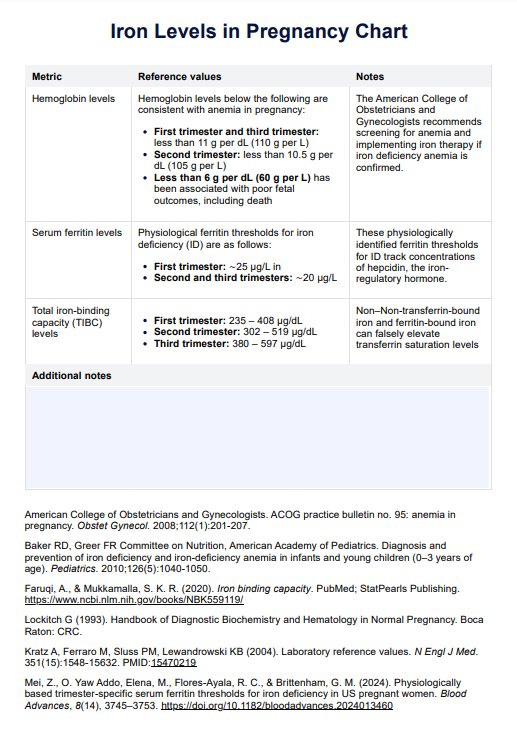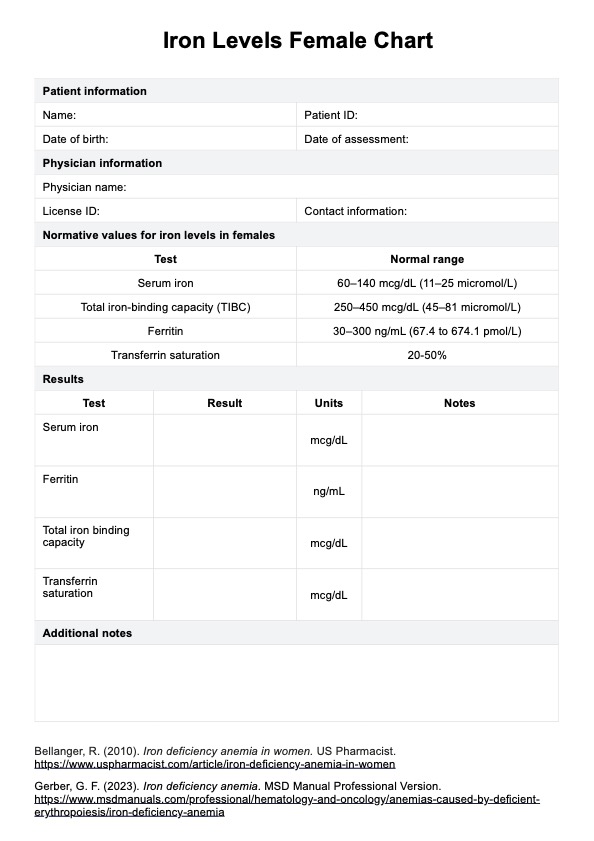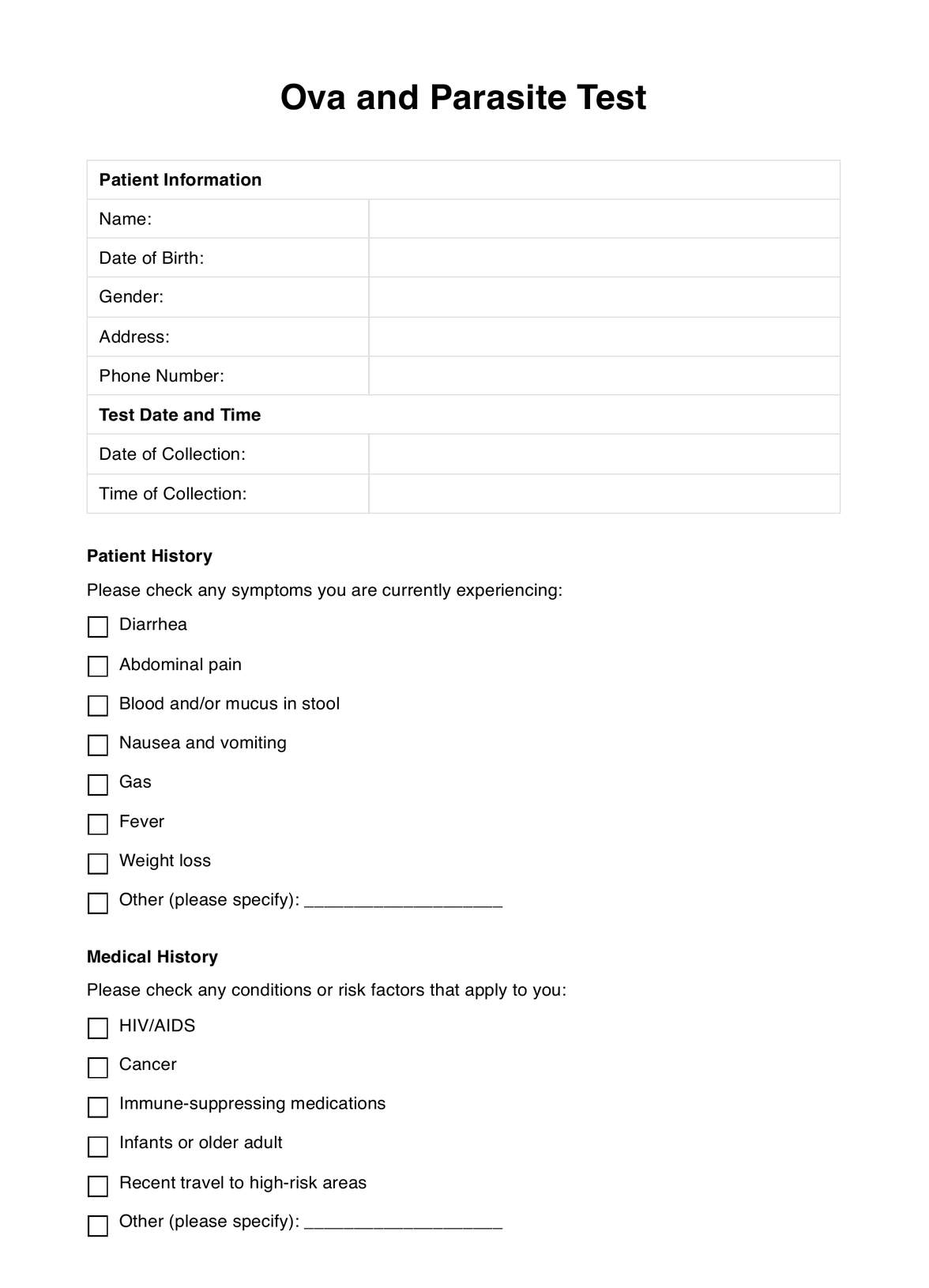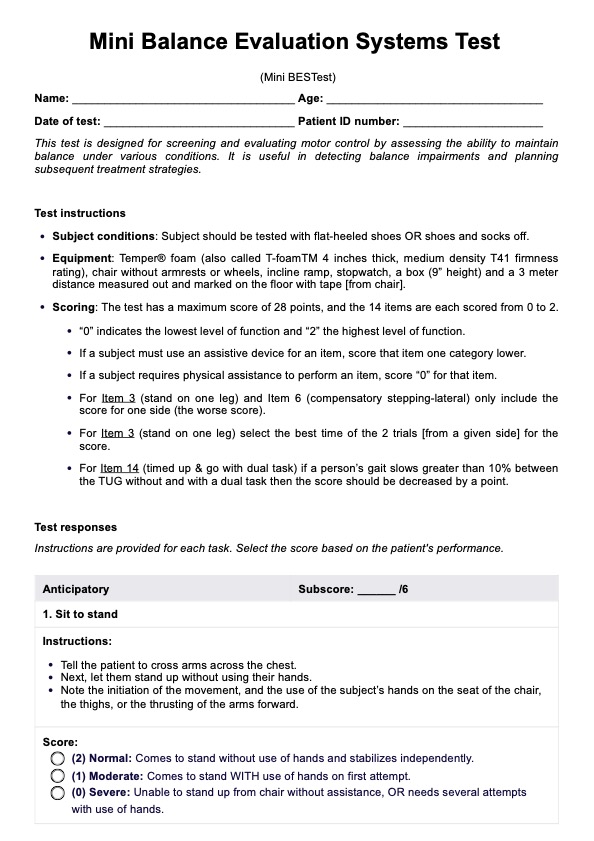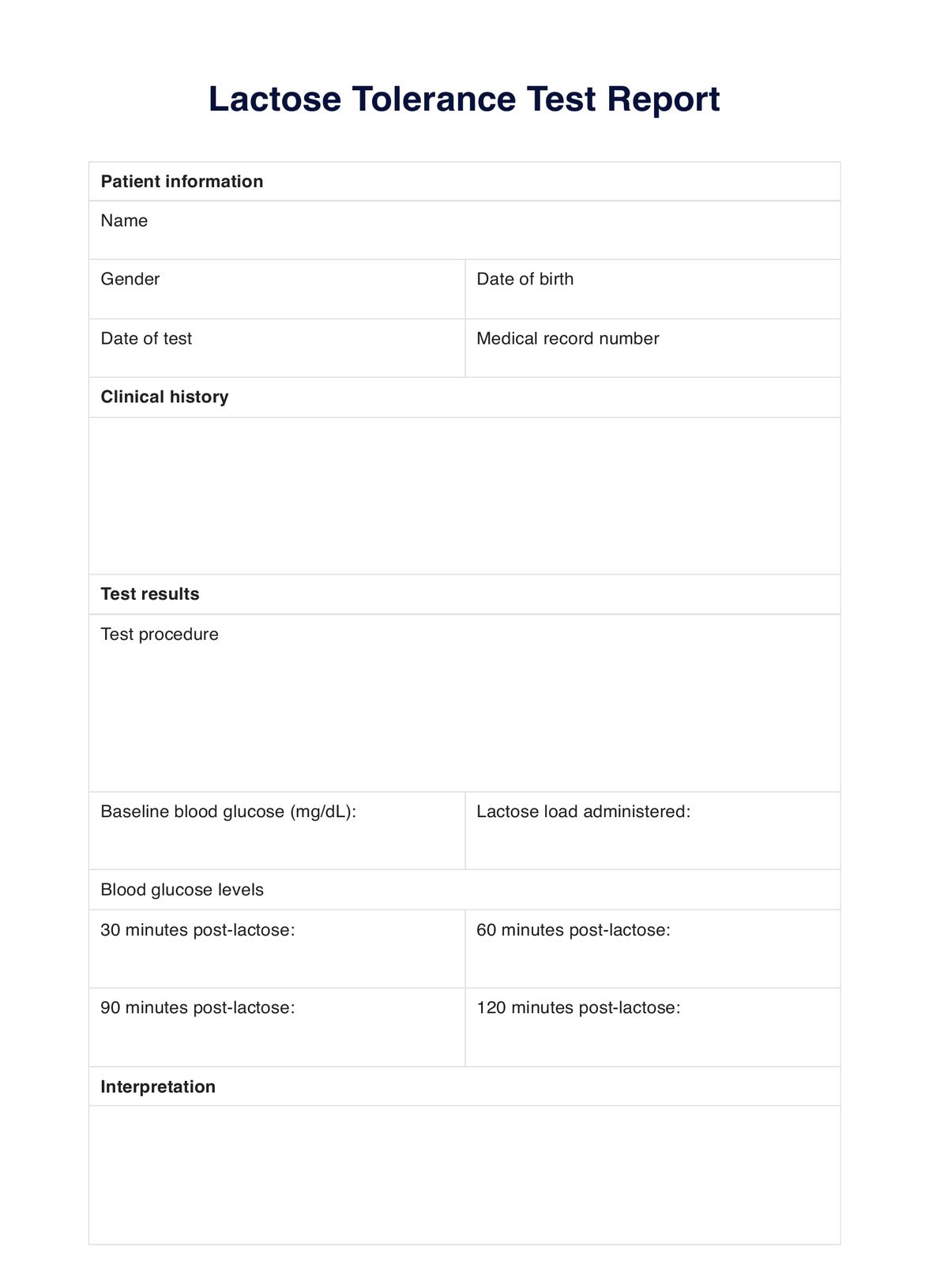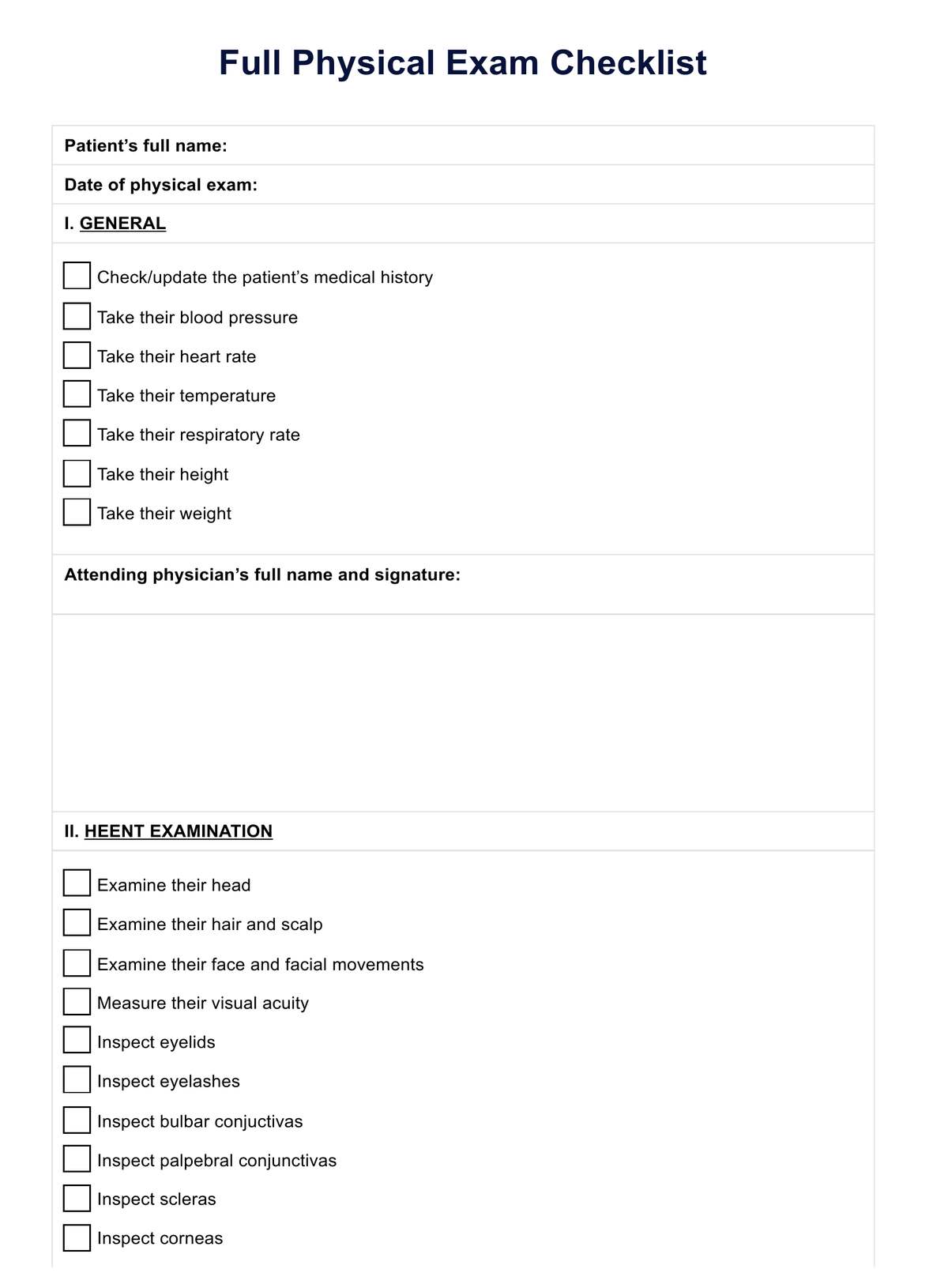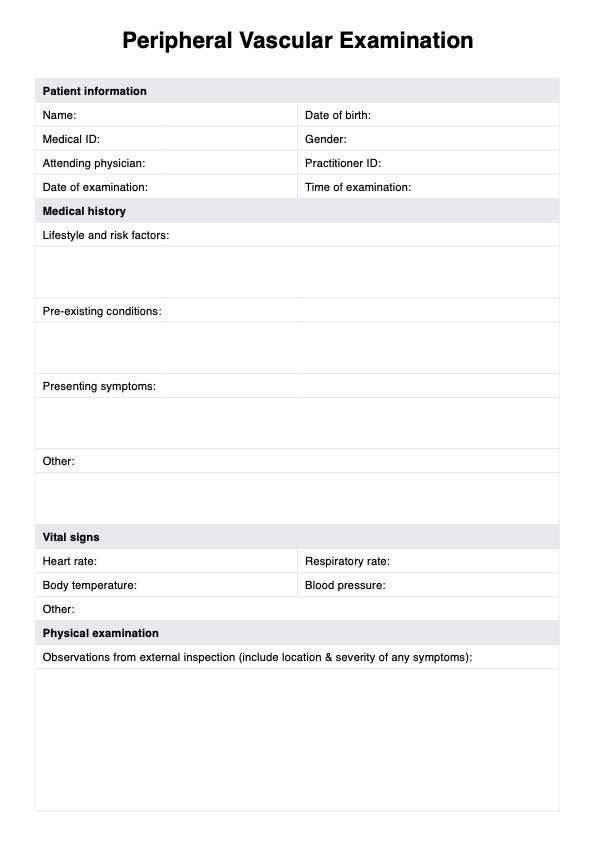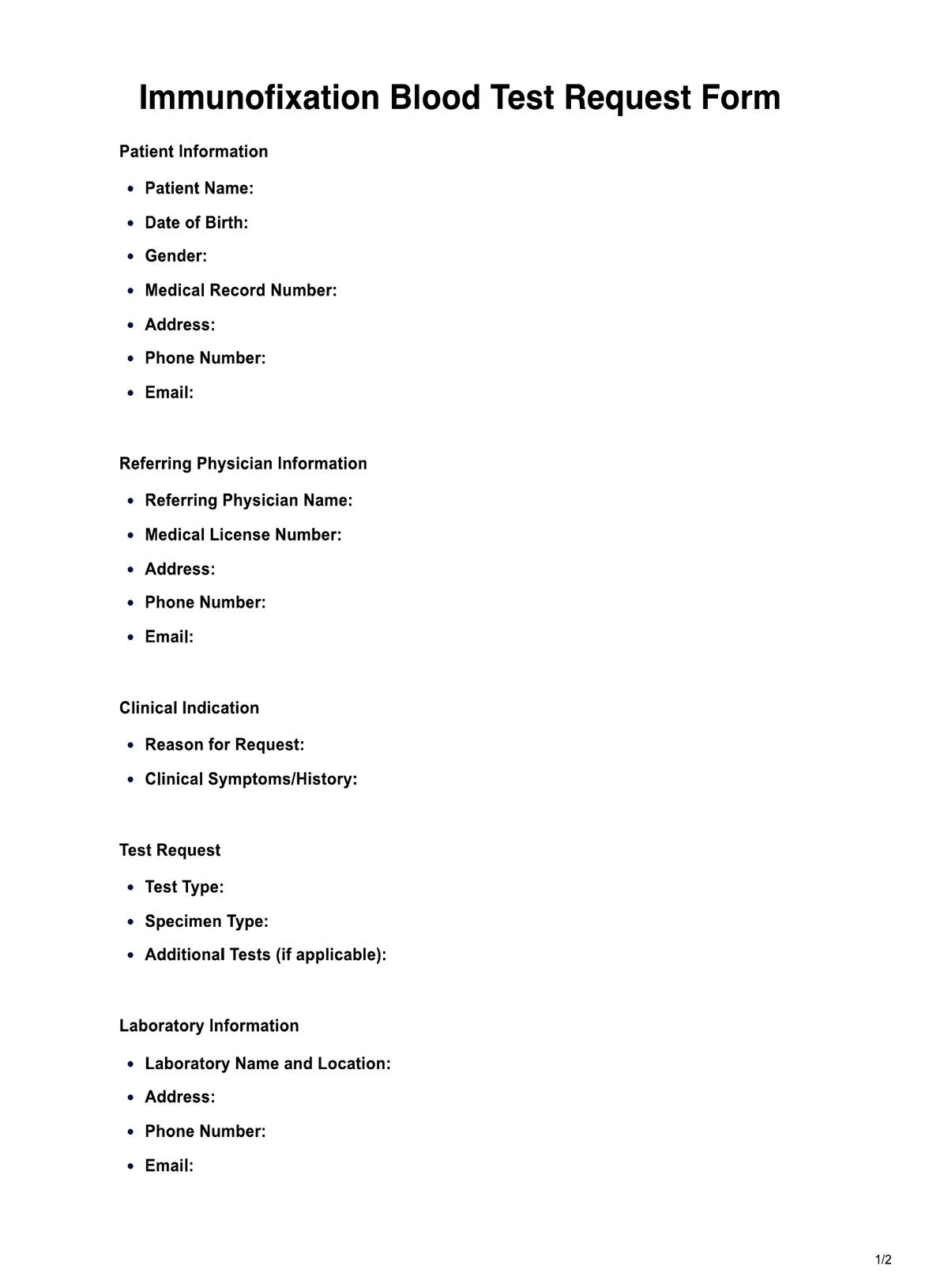Iron Levels Chart
Keep an Iron Levels Chart readily available for interpreting and analyzing your patient’s iron levels. Access a free template by clicking here.


What is an Iron Levels Chart?
Iron is crucial for blood production, with about 70% found in red blood cells called hemoglobin, which carries oxygen from the lungs to tissues. Healthy red blood cells ensure optimum function, and monitoring your patient's normal iron levels is vital.
An Iron Levels Chart, in the context of medical diagnostics, refers to a graphical representation or tabular format that shows the results of various tests used to quantify or measure the concentration of iron in an individual's body. The existence of this chart is due to the importance of iron in maintaining one's overall health and the need to identify iron-related conditions for immediate intervention because of its significant health implications.
The chart typically includes results from the tests that measure iron, such as the serum iron test, transferrin test, total iron-binding capacity (TIBC) test, and ferritin blood test. These tests provide insights into the body's different aspects of iron metabolism, such as the amount of iron in one's blood, the capacity and amount of transferring to bind with iron, and the level of iron storage in the body. It's a way to identify if there is too little or too much iron.
The chart presents an overview of an individual's iron status. Having all these in a single document can help healthcare practitioners diagnose iron deficiency anemia or hemochromatosis more easily and devise treatment/management strategies. Iron deficiency anemia is also a frequent issue in chronic kidney disease. Our take on the Iron Levels Chart includes a table where you have space to write down your patient's result and their corresponding interpretation based on the provided expected normal range.
Iron Levels Chart Template
Iron Levels Chart Example
How does it work?
Incorporating this chart into your practice doesn't take rocket science. Here are the steps to get started:
Step 1: Download the template
Start by selecting either the "Download Template" or "Use Template" button. Alternatively, the chart in Carepatron's template library is available on the app or website.
Step 2: Input essential information
You should include essential patient details if you intend to extend the chart's utility beyond serving as a visual aid or patient education tool.
Step 3: Compare and differentiate
Next, utilize the provided chart to compare and differentiate between the normal levels on the chart and those identified in your patient's test results document. Ensure that factors like age, sex, and the patient's current condition are considered during your analysis.
We've provided you with the normal ranges for each test but take note that values may vary among laboratories. In other clinics, they use the Iron Levels Chart for females and males or the Iron Levels Chart for adults for more specific results.
Step 4: Record your analysis
On our template, you can record your observations and findings in the designated space to interpret the results. You may use the space at the bottom to write a summary of the results, any oral iron supplements needed, and further examinations required.
Step 5: Safeguard the template
Upon completing your consultation, it is essential to securely store the template, restricting access to relevant individuals exclusively. For digital copies, we recommend storing your document on Carepatron, a HIPAA-compliant, free patient records software capable of safeguarding all medical records, including a completed chart of iron levels relevant to your patient.
Different forms of iron test
The free blood Iron Levels Chart results provide essential information about an individual's iron status needed to diagnose and address potential health concerns. To help you out, here's a general overview of what each test is and the implications of their results.
Serum iron test
This test measures the iron concentration in one's bloodstream. Low serum iron levels often indicate an iron deficiency resulting from inadequate dietary iron intake, malabsorption issues, or blood loss. On the other hand, elevated serum iron levels may signal excessive iron consumption, intake of specific vitamins, or conditions like hemolytic anemia, liver failure, or hepatitis.
Transferrin test
This test checks the quantity of transferrin, a vital iron-transporting protein. Low levels may stem from insufficient transferrin production by the liver or excessive renal loss. While elevated transferrin levels can suggest iron-deficiency anemia.
Total iron-binding capacity (TIBC) test
This test evaluates how effectively iron binds to transferring and other blood proteins. An elevated TIBC value, typically above 450 mcg/dL, often indicates low blood iron levels, potentially due to increased menstrual blood loss, dietary deficiencies, pregnancy, or chronic infections.
Ferritin blood test
A ferritin test checks how much iron is stored in the body. A low ferritin level in the blood signifies depleted iron stores, which indicates iron deficiency. Conversely, elevated ferritin levels may point to a condition causing excess iron storage.
When would you use this chart?
The iron levels in blood chart is commonly used in various clinical scenarios to assess and monitor an individual's iron status. Here's a list of the situations in which an iron level chart is typically utilized:
Identifying iron-related problems or conditions
Since iron tests are typically requested when a person exhibits symptoms of an iron-related problem or condition such as anemia, deficiency, or overload, the chart can be used as a reference when coming up with a diagnosis or identifying the underlying reason for the iron test results. Aside from that, you can also use the chart as a document to record the results for future use.
Monitoring treatment
If you create multiple copies of the iron level range chart, you can use it to track the effectiveness of treatments that aim to elevate or reduce iron levels within the body. One example is periodically monitoring the levels of individuals taking iron supplements or undergoing therapies to manage iron overload.
Differential diagnosis
The iron level chart can also help rule out other conditions that manifest similar symptoms to iron deficiency anemia or iron overload. Such conditions are aplastic anemia, anemia or inflammation, or anemia due to vitamin deficiencies.
Commonly asked questions
Primary care doctors, hematologists, gastroenterologists, and cardiologists will likely request an Iron Levels Chart.
Iron level charts are used when the referring physician must analyze, interpret, and monitor the patient's iron levels.
The iron level charts are mainly used as a document where the referring physician can write down their observations and findings based on the analysis and interpretations they made.
Iron rich foods include lean meat, chicken, green vegetables, and fish. Eating these foods can help maintain healthy iron levels in the body. Vitamin C has also been shown to enhance how the body absorb iron.


